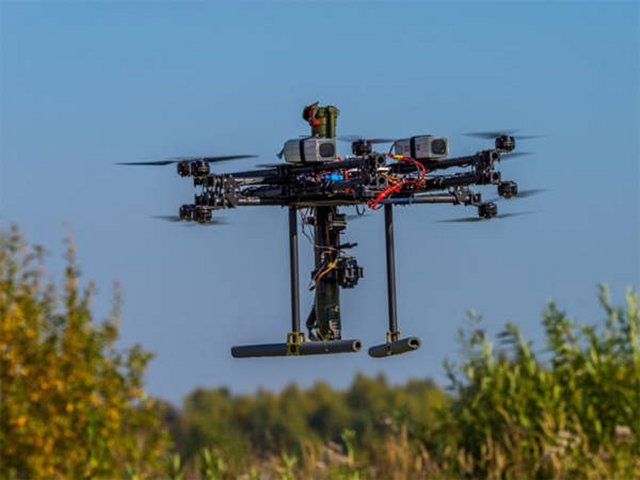Breaking news
Russian company UIMC has presented releases for a new multicopter attack system 51202162.
| 2016
|
|
|||
|
Defence & Security News - UIMC
|
|||
|
|
|||
| Russian company UIMC has presented releases for a new multicopter attack system | |||
|
United Instrument Manufacturing Corporation (UIMC) has presented plans for a multifunctional air robotic system, which includes a robot helicopter, observational copter, reconnaissance copter, and attack copter with rocket-launching capabilities. The robots can carry out a wide range of tasks and can act either independently or as part of a unit. A number of products in the complex were presented for the first time at the Robotics of the Russian Armed Forces exhibition.
|
|||
|
|
|||
 United Instrument Manufacturing Corporation multifunctional air robotic system United Instrument Manufacturing Corporation multifunctional air robotic system |
|||
|
|
|||
|
The flying robots were designed to observe distant objects, record video and still images (including thermal imaging), transmit video in real time, deliver goods to a specified point, and destroy enemy targets on the battlefield. “The technology developed by Concern Systemprom is designed to effectively replace humans wherever possible. It can carry out reconnaissance, monitoring, and patrolling missions of indoor and outdoor facilities, transport cargo, prepare cartographic materials, and fulfill combat tasks,” said Sergey Skokov, Deputy CEO of United Instrument Manufacturing Corporation.
According to him, the human role in managing the robots has already been minimized: the drone detachment can operate in an autonomous mode, where each robot performs its function independently, following its own specified route. “These robots can navigate through the air without the support of an operator, choose their own routes, carry out reconnaissance work, and interact with other drones and robotic systems,” said Sergey Skokov. The robot helicopter complex is designed for conducting video surveillance, delivering a payload to a given destination, and carrying out meteorological observations. It has a flight range of a few hundred kilometers. The reconnaissance copter can fly to an altitude of several thousand meters and can be used to detect and identify targets in realtime. The observational copter can be used to adjust artillery fire and determine the location coordinates using the signals of GLONASS/GPS satellite navigation systems. The attack multicopter can detect and destroy enemy targets, including tanks and armored vehicles, with the help of standard rocket weapons. During the exhibition, Concern Vega also presented upgraded software and hardware complex for group control of UAVs and ground-based robotics systems (based on Kamaz-43116 vehicles). The complex, which includes control panels for UAVs and robots, is equipped with five workstations for operators. With the help of a high-performance supercomputer, included in the system, it is possible to control up to 10 UAVs and ground-based robotic systems simultaneously. The machine has great cross-country abilities and can operate autonomously for up to seven days. The mobile control station can be deployed within 15 minutes. The exhibition opened on February 10, 2016, as part of the first military-scientific conference Robotics of the Russian Armed Forces, which is taking place at Patriot Park, the military-patriotic recreation park of the Russian Armed Forces. The event was organized by the Head Research and Testing Center for Robotics in cooperation with the Department of Scientific Research and Advanced Technological Support of the Russian Defense Ministry. Leaders of the Russian Armed Forces, representatives of the Military-Industrial Commission, law enforcement agencies, the Russian Academy of Sciences, leading industrial enterprises, developers, and the head designers of UIMC and other research organizations are all participating in the conference. |
|||




























